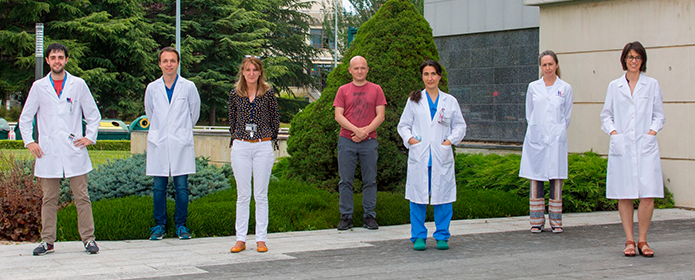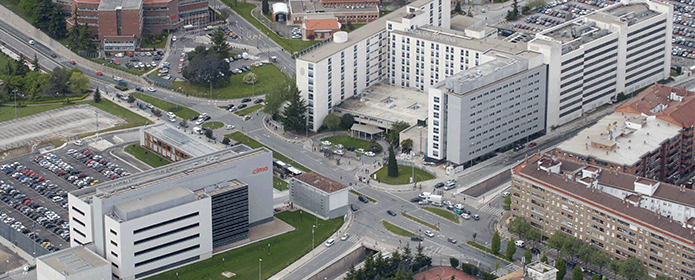New therapy for the treatment of stroke in diabetic patients
Researchers from CIMA of the University of Navarra and the Navarra Hospital Complex demonstrate that the administration of MMP-10 protein reduces brain damage without producing hemorrhagic complications.

Scientists at research center (CIMA) of the University of Navarra, belonging to the CIBERCV, and the Complejo Hospitalario de Navarra (CHN), linked to Navarrabiomed, have developed a new therapy for the treatment of stroke in diabetic patients. The study shows that the use of MMP-10 protein reduces brain damage after stroke in diabetic animals without producing hemorrhagic complications. The results have been published in the scientific journal Translational Stroke Research.
Stroke is a cerebrovascular disease in which blood does not reach the brain in the necessary quantity due to the presence of a thrombus, which can cause irreparable damage. This disease is the leading cause of death among Spanish women and the second among men. Specifically, more than 1,000 strokes occur in Navarra every year.
One of the cardiovascular risk factors, in addition to age, is diabetes. "In these patients, not only does the risk of stroke increase, but also the effectiveness of the only pharmacological treatment C is reduced by 50%: tissue plasminogen activator (tPA). This thrombolytic drug (which facilitates dissolution of the thrombus) has very limited indications: it can only be used in the first hours after stroke and can also have associated side effects, such as bleeding. In the case of diabetic patients, the risk of bleeding is much higher and their thrombi are more resistant, making the treatment of these patients even more complicated. Our work proposes a therapeutic alternative in experimental models," explains Dr. Josune Orbe, director of the laboratory on Atherothrombosis at CIMA and coordinator of the study.
Most effective therapyMetalloproteases (MMPs) are a group of proteins that, in addition to many other functions, are involved in the processes that control blood clotting. "Previous work from CIMA has already demonstrated the ability of MMP-10 to dissolve brain thrombi in preclinical stroke models. However, this study expands on the beneficial effects of this protein. Not only is it more effective than tPA in reducing brain damage in diabetic animals, but it also increases the efficacy of tPA in this experimental model of diabetes-associated stroke," say the authors of research.
The results open up new possibilities for the treatment of these patients whose clinical approach requires large economic and social resources. "This joint work continues to investigate new therapeutic options aimed at increasing recanalization of occluded arteries and effective reperfusion of brain tissue, to provide, in an individualized manner, precision medicine to stroke patients."
The research is part of the scientific activity of the high school de research Sanitaria de Navarra (IdiSNA), a public-private group for the promotion of biomedical research in Navarra, of which CIMA and CHN are members.




